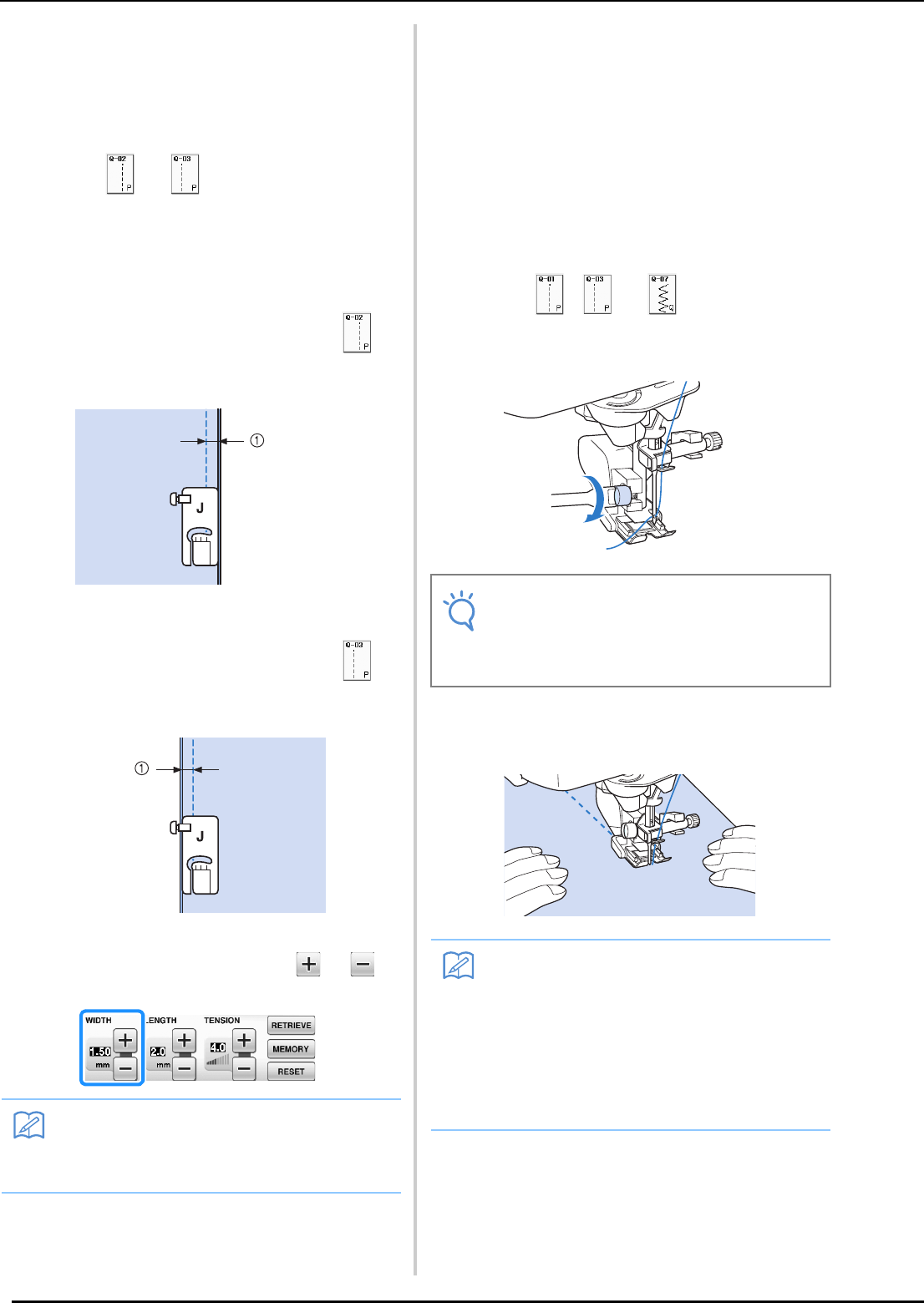
SEWING THE STITCHES
102
■ Piecing
Sewing two pieces of fabric together is called
piecing. When cutting pieces for quilt blocks, make
sure the seam allowance is 6.5 mm (approx.
1/4 inch).
a
Select or and attach presser foot
“J”.
b
Align the edge of the fabric with the edge of
the presser foot, and start sewing.
* To sew a 6.5 mm (approx. 1/4 inch) seam allowance
along the left edge of the presser foot with
selected, the width should be set to 5.50 mm
(approx. 7/32 inch).
a 6.5 mm (approx. 1/4 inch)
* To sew a 6.5 mm (approx. 1/4 inch) seam allowance
along the left edge of the presser foot with
selected, the width should be set to 1.50 mm
(approx. 1/32 inch).
a 6.5 mm (approx. 1/4 inch)
* To change the needle position, use or in
the width display.
■ Quilting
Sewing the quilt top, batting, and backing together is
called quilting. You can sew the quilt with the
walking foot to keep the quilt top, batting, and
backing from sliding. The walking foot has a set of
feed dogs that move together with the feed dogs in
the needle plate during sewing.
For straight line quilting, use the walking foot and
the straight stitch needle plate. Always select a
straight stitch (middle needle position) when using
the straight stitch needle plate.
a
Select , or .
b
Attach the walking foot (see page 55).
c
Place one hand on each side of the presser
foot to hold the fabric secure while sewing.
Memo
• Using a straight stitch (middle needle posi-
tion) makes it easier to sew smoothly (see
page 83).
Note
• Thread the needle manually when using the
walking foot, or only attach the walking foot
after threading the needle using the
“Automatic Threading” button.
Memo
• Sew at slow to medium speed.
• Do not sew in reverse or use stitches that
require side ways or reverse feeding.
Always check to be sure that your quilting
surface is securely basted before beginning
to sew. Specialized machine quilt needles
and threads are also available for machine
quilting.


















